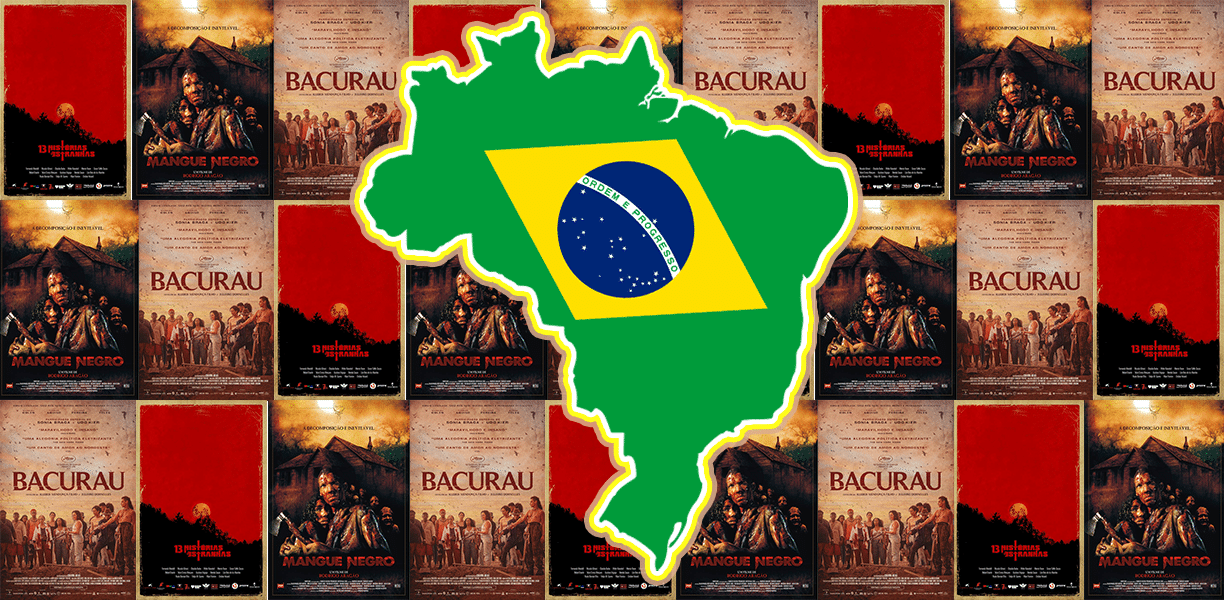Brazilians love horror. Just in 2023, Talk To Me became one of the highest-grossing films in the country, with half a million tickets sold in theaters. But when you take a look at Brazilian cinematic history, genre films – until very recently – were sparse and in the low-to-no-budget bracket.
So, how can a country with such a thirst for horror films, produce so little of its own?
For decades, the US dominated the production and distribution of horror films with Hollywood shaping many of the tropes and conventions that would come to be associated with the genre.
At the time that foundational horror flicks like 1931’s Frankenstein and Dracula were arriving in Brazil, our film industry was still young and the filmmakers invested in its development were determined to create a language that denied anything foreign that did not reflect Brazilian culture.
Of course, themes of mysticism and fear were a part of our cinema. However, filmmakers hesitated to adopt the language and aesthetic of US horror, as its entrapments did not reflect our tropical realities.
Another issue was that, even when movies were essentially horror, Brazilian filmmakers were cautious to classify them as so. Their apprehension came from fearing that people might feel misled by a film that built a Brazilian horror lexicon, rather than using Hollywood’s framework.
In his 2002 book, Dicionário de Filmes Brasileiros (Dictionary of Brazilian Films), Antônio Leão da Silva Neto listed that of the 3,415 movies in Brazil’s 150 years of film, only 20 were classified as horror and most were from the same creator, José Mojica Marins aka Zé do Caixão.
Of course, there were people making an effort to strengthen the genre, like Petter Baiestorf, whose no-budget, direct-to-video horror movies were largely alone in the homegrown marketplace from the 1990s into the 2000s. Still, for generations of Brazilian theatergoers, horror was not part of our country’s catalog.
That is until the 2010s. Many claim the shift started with the 2008 gore fest that is Rodrigo Aragão’s Mangue Negro. But regardless of which film was the catalyst for this renaissance, according to a catalog by Macabra (the biggest publishing label specializing in horror in Brazil), my country released at least 40 horror features and shorts from 2010 to 2019 – twice the amount we had produced up to 2002.
So what happened?
As these things go, the answer is complicated.
First, it’s fair to say that after years of consuming a lot of horror, a rising generation of Brazilian filmmakers wanted to try their hand at it.
And horror is ripe for place-based innovation as it’s a genre that invites reflections on what destabilizes us as a society. It is no surprise an environment such as Brazil – that went and is still going through so much social and political unrest – would gravitate towards telling our story through horror.
There’s also the fact that our film industry, despite not being as influential as Hollywood, has grown much stronger over the years. Like in the US, we have private production companies and international studios who buy and distribute our films and shows. However, the cost of making a film is, at times, too high, even for private businesses. So, instead of relying solely on sponsorships, many projects apply for government funding too.
The way this works is through something called Rouanet Law. Its focus is to provide funds for Brazilian artists – be it filmmakers, painters, sculptures, dancers, musicians, etc. – to develop, produce and distribute projects that reflect on our culture. These funds are distributed by grants, which require a rigorous application process and extensive debriefing after the project is finished.
The money, you might be asking, comes from tax incentives. The appeal is that big companies get to deduct 100% of their capital invested in these projects and also promote their brands. That is why it’s so common for very small, independent films in Brazil to be backed by big banks and governmental bodies.
All of that coupled with technological advancements that make filmmaking less expensive, is helping Brazil slowly make a name for itself in the genre space. But we’re not just producing more horror films, we’re also getting recognized for them: for example, Bacurau (2019) won the New York Film Critics Circle’s Best Foreign Film Award.
Now, you might be asking, what is the point of talking about any of this?
Well, understanding the way people talk about themselves is key to understanding cinema. The visual language and the tropes a group of people choose to use might tell us just as much as the content of the story itself.
And I believe – as a Brazilian, filmmaker and horror fan myself – that our horror boom can be understood as something of a reclaiming.
Of course, we love a good scare as much as the next person, but for decades someone else told us what we should be scared of. And I don’t think you need to make much of an effort to notice that the monster in these films mostly stemmed from a fear of “the other,” the representative of foreign savage cultures.
Be it communism or a mishmash of Indigenous cultures from North, Central, and South America, anything that wasn’t Eurocentric and mostly Christian was evil.
But now the pendulum is swinging and those who used to be “the others” are telling our own versions of the story. We’re unpacking what truly scares us and how we might be able to exorcise the monsters of our past. And I think that’s pretty important.

